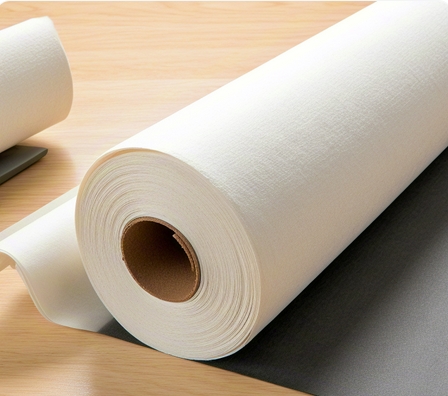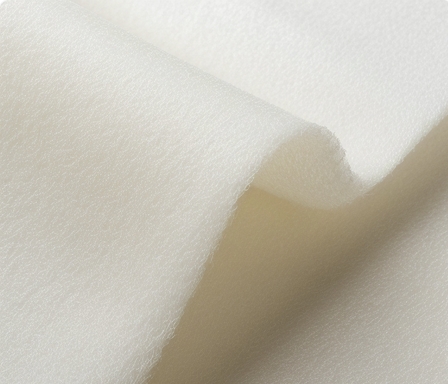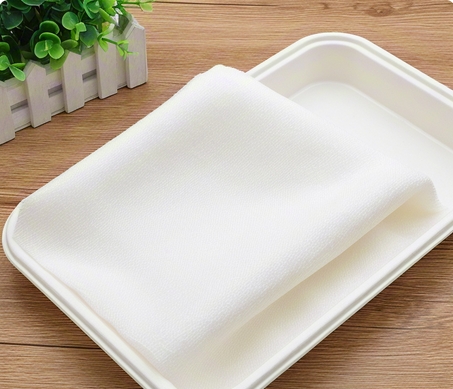Language

In the fields of industry and people's livelihood, although dust-free cloth and non-woven fabric are similar in names, there are essential differences in the material characteristics and industrial value of the two. As professional materials engineers, we will conduct systematic analysis from microstructure to macro applications to help readers accurately identify these two special fiber products.
1. Material characteristics and functional positioning . Technical analysis of nonwoven fabrics This environmentally friendly material that adopts nonwoven process, the main raw materials include polypropylene (PP) staple fiber, polyester (PET) filaments and wood pulp composite fibers. Through hydrospunlace cross-linking technology or hot melt bonding technology, a three-dimensional disordered fiber network structure is formed. Taking medical surgical dressings as an example, their fiber porosity is more than 85%, and their breathability index can reach 300L/m²·s, but their tear resistance strength is only 2-3N/cm², which is suitable for the field of disposable protective products.
2. Precision structure of dust-free cloth The dust-free cloth material specially designed for clean rooms uses microfiber double braiding technology, and the diameter of the single filament is controlled between 0.1-0.3 Daniel. Through the laser micro-fusion edge sealing process, the residual amount of edge shreds can be reduced to below 0.01 mg/m². Taking the polyester fiber dust-free cloth used in the semiconductor industry as an example, its surface friction coefficient must be stable in the range of 0.15±0.02 to ensure that the wafer surface is free of scratch pollution.
3. Engineering differences in production processes 1. The spunbond production line speed of the non-woven fabric manufacturing system can reach 400m/min, and the meltblown microfiber diameter can reach 1-5μm. For example, the meltblown non-woven fabric used in the core filter layer of the mask has a fiber stacking density of 0.25g/cm³, but its structural stability is poor. After repeated bending for 5 times, the fiber shedding rate exceeds 15%.
4. The precision processing of dust-free cloth is completed in ISO Class 5 clean environment from fiber pretreatment to finished product packaging. Ultrasonic cutting technology can control the edge heat-affected zone within 50μm. Combined with the ionization process, the surface resistance can be stabilized in the range of 10^6-10^9Ω. Experimental data show that after 100,000 wipes and tests, the fiber retention rate of high-quality dust-free cloth still reaches more than 98.5%.
5. The physical boundary of application scenarios In the electronic manufacturing workshop, the liquid absorption rate of microfiber dust-free cloth must reach 200ml/m²·s, while ordinary non-woven wipe materials can only reach 80ml/m²·s. The anti-static and dust-free cloth used in automotive spraying workshops must have a surface charge decay time of<0.5 seconds, which is a physical characteristic that cannot be achieved by traditional non-woven fabric materials.
From the microstructure, non-woven fabrics are like fluffy quilts, with randomly tangled between the fibers physically; while dust-free cloths are similar to precision-woven sweaters, each fiber is fixed by directional arrangements and chemical bonds. This essential difference determines the irreplaceability of the two in industrial applications. Correct selection of materials can improve the yield of the production process by 3-5 percentage points.
6. Comparative analysis of core performance indicators In the selection of industrial materials, breathability, antistatic properties and cleanliness are key
indicators that determine the applicable scenarios of dust-free cloth and non-woven fabrics.
Nonwovens exhibit high breathability (porosity up to 65-80%) thanks to their open fiber structure, which makes them excellent in medical dressings and agricultural cover films. In contrast, the dust-free cloth material woven with polyester microfibers controls breathability in the range of 25-35% through a dense warp and weft structure (more than 200 fibers per square centimeter). This design can effectively block the penetration of 0.1 micron-scale particles in the semiconductor manufacturing process.
In terms of antistatic properties, the surface resistance value of ordinary nonwoven fabrics is usually above 10^12Ω, while the dust-free cloth of embedded carbon fiber conductive wires can reduce the resistance value to the range of 10^6-10^8Ω, which is of decisive significance for the liquid crystal panel production workshop (required to be electrostatic voltage<100V). It is worth noting that medical grade nonwoven fabrics treated with special plasma have begun to have basic antistatic functions, but have not yet met the electronics industry standards.
In the cleanliness dimension, the particle release amount of ordinary non-woven fabrics is about 300-500 pieces/liter (corresponding to the ISO Level 8 clean standard), while the ultrasonic-cleaning dust-free cloth can control the number of particles within 10 pieces/liter (comply with the ISO Level 3 ultra-cleaning requirements). According to actual data from a well-known fab, wiping with high-quality dust-free cloth can extend the cleaning cycle of the lithography machine's mirror surface by 40%, directly reducing equipment maintenance costs.
Accurate matching strategy for application scenarios In the field of industrial materials application, the choice decisions must be based on the cleanliness level and operating accuracy requirements of the use environment:
Typical application scenarios of non-woven fabrics • Medical protection: The average daily consumption of three-layer structure medical masks reaches 230 million pieces (WHO 2023 data) • Environmentally friendly packaging: The penetration rate of biodegradable non-woven shopping bags in the EU market has reached 58% • Basic protection: Automobile manufacturing workshops often use non-woven fabrics with a weight of 35g/m2 as equipment dust covers • Daily cleaning: Supermarkets generally use spunlace non-woven fabrics for shelf surface wipes
Core application areas of dust-free cloth • Microelectronics manufacturing: Each 12-inch wafer production requires more than 15 dust-free cloth wipe process • Optical instrument maintenance: Astronomical telescope mirror cleaning requires the use of Class 100 class ultra-clean dust-free cloth • Biopharmaceutical: GMP workshop stipulates that sterilized dust-free cloth must be used for equipment wipe • Aerospace: Satellite optical components cleaning requires the use of NASA-certified anti-static dust-free cloth
Scientific selection decision model recommends that enterprises establish a three-dimensional evaluation system for material selection: In terms of functional adaptability, dust-free cloth containing conductive fibers must be selected in scenarios involving ESD protection; in terms of cost-effectiveness, non-woven fabrics weighing 50g can be selected for ordinary equipment wiping of automobile assembly lines, and the cost of a single use can be reduced by 70%; in terms of environmental protection and compliance, the EU REACH regulations have strict testing standards for reused dust-free cloth cleaning agents.
Tags:
RELATED RESOURCES

Application of reel dust-free cloth in display panel manufacturing: 0.5mm precision cleaning solutio
In the fields of advanced manufacturing and microelectronics, submicron pollution control is directly related ......
More

How to meet the Class 1000 standard for dust-free cloth? Material engineering and spray pressure con
1.Performance benchmark of clean room core consumables The dust-free cloth standard refers to the technical sp......
More

Detailed explanation of professional-grade anti-static dust-free cloth selection technology
Surface resistance: The basic parameters of electrostatic protection The core performance of anti-static dust-......
More

Ultrafine dust-free cloth technology upgrade: the secret of achieving Class 1000 cleanliness standar
In the field of industrial precision cleaning, there are significant technical grading differences in professi......
More
Related Products
Room 101, Building 1, Angeer Factory, No.4, Hetian Road, Shatian Community, Kengzi Street, Pingshan District, Shenzhen, Guangdong, P.R. China 518122
info@wipestar.com
+86-755-89616775
+86-755-89616773
Related Products
RELATED RESOURCES

Application of reel dust-free cloth in display panel manufacturing: 0.5mm precision cleaning solutio
In the fields of advanced manufacturing and microelectronics, submicron pollution control is directly related .........
More

How to meet the Class 1000 standard for dust-free cloth? Material engineering and spray pressure con
1.Performance benchmark of clean room core consumables The dust-free cloth standard refers to the technical sp.........
More
WIPESTAR
微信官方公众号